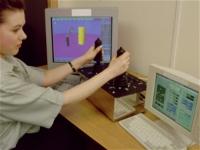Simulation Benefits
We deliver a variety of risk reduction and visualisation services based on a comprehensive suite of simulation tools and skills, including: VisualComponents, Robot Studio, Kuka Sim Pro, IGRIP (for legacy nuclear projects), Matlab and Simulink (for dynamics and control).
Simulations:
- Are Cost effective: To assess the capabilities of a given design, compared to physical mock-ups.
- Offer Optioneering Breadth: Multiple options can be produced quickly and evaluated.
- Prove Concept Feasibility: During the system specification and development phase a simulation of the concept quickly allows the feasibility of a design and its performance to be analysed and verified. During “What if?” studies:
- The process and material flow can be validated
- The ‘points of view’ can be simulated for correct placement of cameras and windows
- Robot selection and placement can be verified for reach, access and potential for collisions
- Provide Risk Reduction: Technical and commercial risks are reduced as the simulated model provides critical information on the performance of the design.
Additional Benefits Include
Evolving Appropriate Engineering Detail
A simulation can start simply and be refined to match the process as it develops. It can even be used to give realistic cycle times for each operation. These can, in turn, be fed into Operations Analysis studies.
Visualisation
Simulation is an excellent communication tool, both internally and externally with the client team. It can also be deployed as a ‘live’ mimic of the operation.
“Hands-On” Design
The design team and future operators can be involved in trials of the system layout and even its controls and HMI. This approach is not only cheaper than physical mock-ups but early operator involvement can avoid late and costly changes.
Shorter Delivery Times
Simulation promotes concurrent engineering which can reduce project lead times while also reducing risk, eg a 9 DOF robot arm controller was thoroughly tested using a 3D Simulation long before the hardware was ready.
In some cases the robot simulation tool utilises the actual industrial robot programming language such that the simulation program becomes the skeleton of the final robot program. This not only reduces code production times and potential for errors but also reduces expensive testing during the critical assembly and integration phase.
 Use as a Training Aid
Use as a Training Aid
Operators can receive basic training even before the system has been delivered! It is better that potentially costly errors and ‘crashes’ occur in the virtual, rather than the real world.
Use the Contact page to arrange a free consultation visit to discuss your application.